How to Have Your Best Active Rest Day
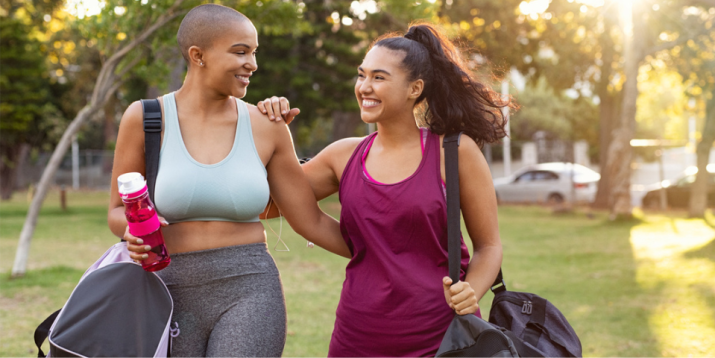
Many of us have a hard time taking days completely off from exercise. We (wrongly) assume that working out nonstop will help us reach our fitness goals faster.
“As a trainer, I hear a lot of clients humble-brag about never taking rest days, but this is nothing to be proud of,” says Amanda Dale, ACE-certified personal trainer and Precision Nutrition-certified nutritionist. “Without rest days, you rob your muscles of the chance to actually grow.”
That said, rest days don’t have to mean spending all day on the couch. In fact, there’s a way you can both exercise and support muscle recovery to maximize your fitness goals.
How? By incorporating active rest days into your routine.
What Is an Active Rest Day?
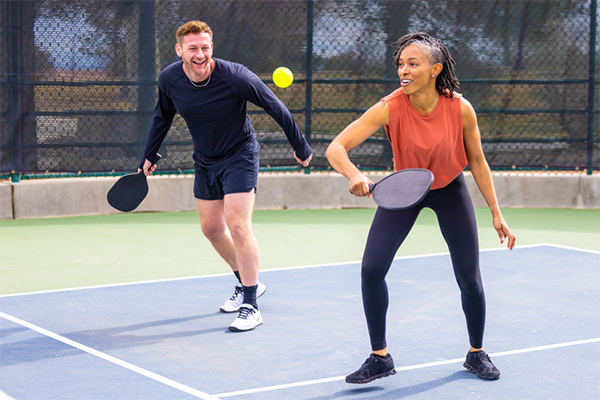
“Unlike a regular rest day, an active rest day entails, well, being active,” says Trevor Thieme, C.S.C.S.
This might mean going for an easy bike ride or a leisurely walk with friends, or trying that restorative yoga class you’ve always been curious about.
The idea is to choose an activity that gets you moving — without feeling like you’re doing yet another workout.
“Active recovery can give you the experience of doing something without compromising your fitness goals,” says Nikki Naab-Levy, B.S., certified Pilates instructor, fitness educator, and massage therapist in Tacoma, Washington. This not only gives you a sense of utility, but it can also help you recover from your previous workout.
“Active rest can help optimize your recovery from a tough workout by engaging your muscles gently, increasing the flow of nutrients to them and waste products away from them,” Thieme says.
By doing light exercise — such as walking, leisure swimming, and yoga — on your day off from the gym, you give yourself a chance to recover from intense exercise and to work on other aspects of fitness that you might not be able to focus on during a regular workout, like mobility and flexibility.
“Mobility work makes it easier to move freely through all your joints during exercise, and can counteract the joint stiffness that comes with the demands of everyday life,” Naab-Levy says.
Active rest days also give you the opportunity to have more fun with your fitness routine. This is the time to go swimming with your family, try out a new dance class, or meet your friends for a casual bike ride.
Rest Day vs. Active Rest Day
Though both include “rest,” rest days and active rest days look pretty different.
A rest day is a time of inactivity, in which you focus only on doing as little as possible to give your body the opportunity to heal and reset.
An active rest day, on the other hand, involves using light exercise to aid muscle recovery, work on other fitness skills and goals, and/or reduce overall feelings of stiffness.
“The idea is to do something that gets you moving, but not to the extent that you feel like you’re working out,” Thieme says.
By doing some form of light activity on your days off from the gym, you can also increase your overall calorie burn. And if fat loss is one of your goals, this added calorie burn can help you reach your goal more quickly.
6 Activities for Your Best Active Rest Day
On board with the idea of active rest days, but not sure where to start? Here are just a handful of options for your next active rest day.
1. Yoga
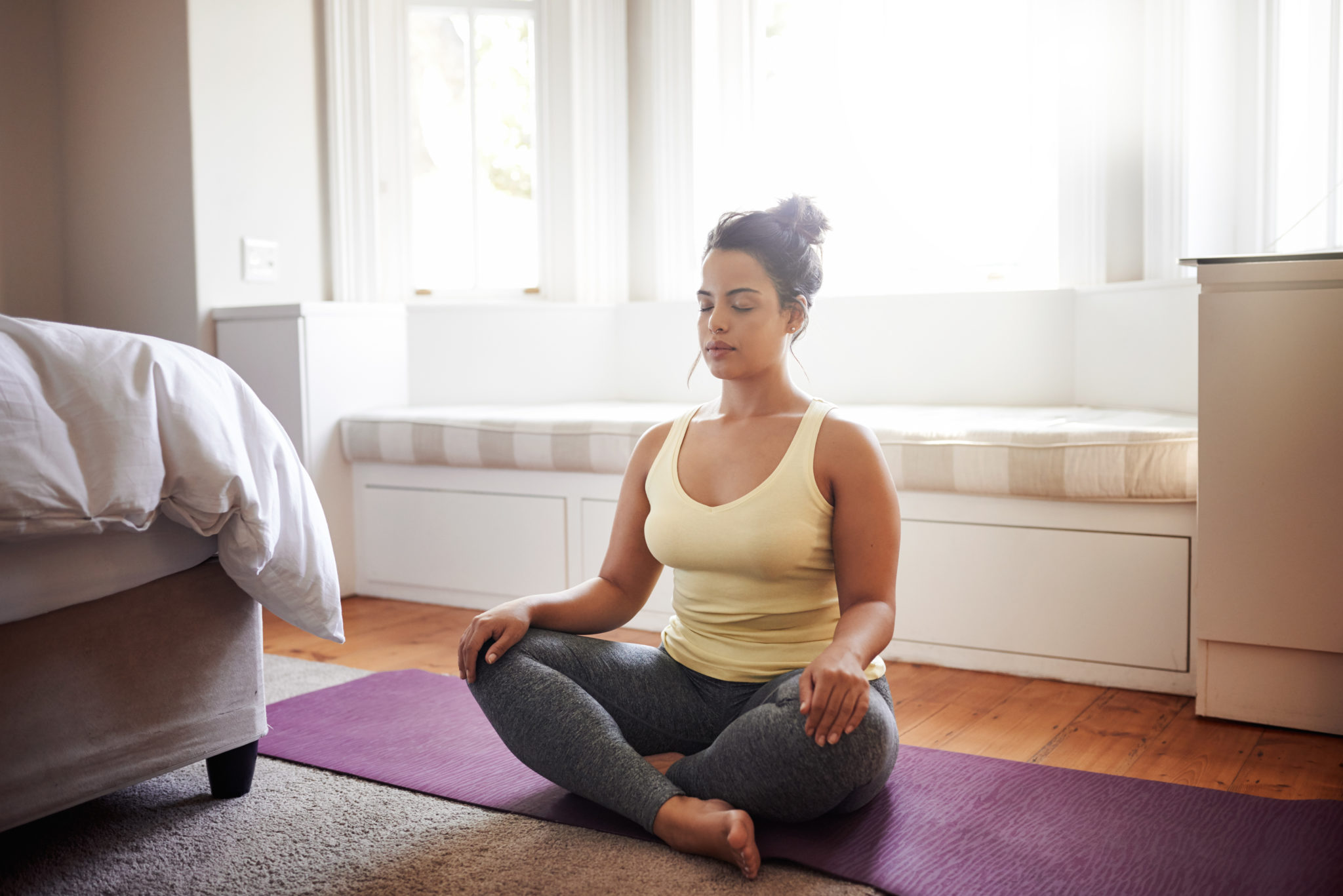
Yoga is a great low-impact activity that can help you build mobility, flexibility, strength, and balance. In fact, college athletes who took biweekly yoga classes for 10 weeks saw improvements in both balance and flexibility.
Middle-aged adults who did an hour-long Hatha yoga class once per week saw gains in cardiorespiratory endurance, muscular strength and endurance, and flexibility in 12 weeks.
With so many different styles of yoga to choose from, you’re sure to find something that fits your needs.
If you want to go the slow, relaxing route, look for Yin yoga, Iyengar, Hatha, and restorative classes, and classes with “gentle” in the name. Bikram, power yoga, ashtanga, and vinyasa classes will likely be more intense.
2. Swimming
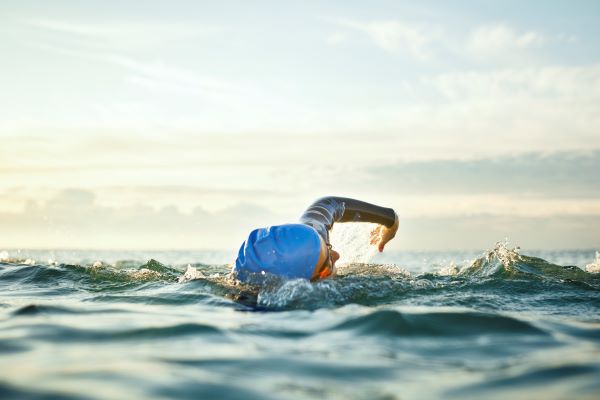
Whether you head for the pool or open water, swimming will give you a full-body cardio and strength workout that’s gentle on joints.
In fact, one study in the Journal of Rheumatology found that previously sedentary adults with osteoarthritis (also known as “OA,” or a “wear-and-tear” condition) who participated in 45 minutes of swimming three days per week reported significant improvements in joint stiffness and pain, and well as greater muscle strength by the end of three months.
Swimming can also eat up serious calories: A 150-pound person will burn more than 200 of them with a light or moderate swimming effort.
3. Cycling
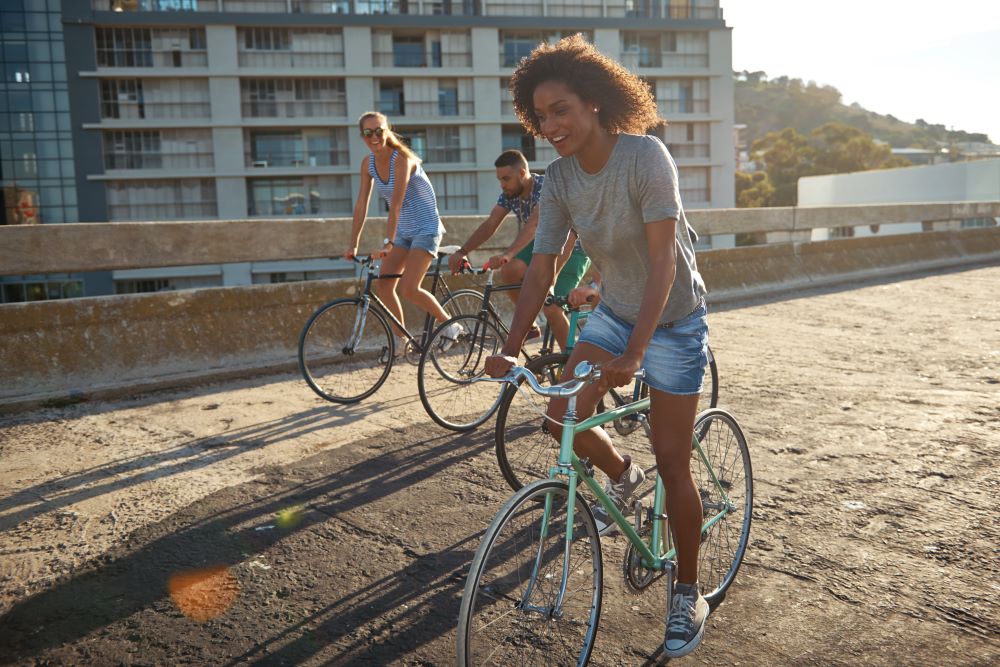
Like swimming, cycling is also easy on joints. The same study in the Journal of Rheumatology found cycling equally effective as swimming at reducing joint stiffness and pain in people with OA.
Cycling also offers a cheap and efficient means of transportation. So ride your bike to work, or hit up nearby trails on your next active rest day.
Riding with moderate effort (12 to 13.9 mph) a 150-pound person can burn nearly 275 calories in 30 minutes. For those who prefer a stationary bike, that same person can burn between 164 and 232 calories.
4. Hiking
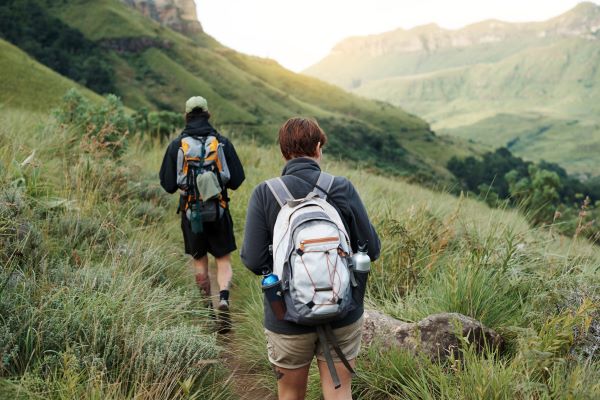
If you’re lucky enough to live near a trail system, take the opportunity to explore new surroundings.
The variance in terrain will work your muscles in different ways than your regular workouts and may increase your caloric burn by 28 percent when compared to walking on flat surfaces, according to research in the Journal of Experimental Biology.
As an added bonus: Spending time in nature may lower your risk for mental illness, according to research in the Proceedings of the National Academy of Sciences.
5. Pilates
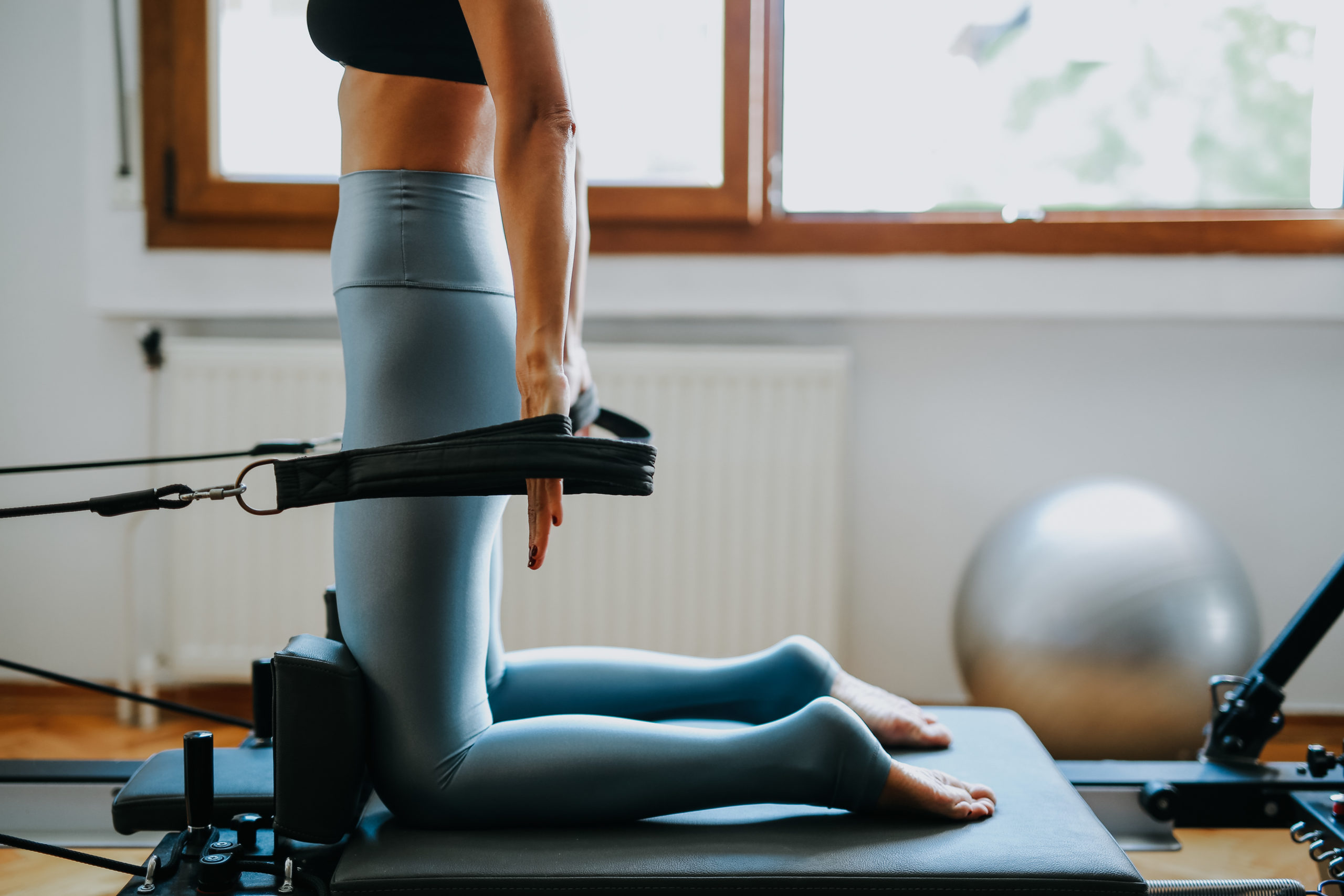
Focus on building core strength, balance, and better posture by doing Pilates (a form of mind-body exercise) on your next active rest day.
Research shows Pilates is especially helpful for runners. In fact, trained distance runners who did one hour of mat Pilates twice a week for 12 weeks improved their 5K time by nearly two and a half minutes, and used less energy than non-Pilates runners.
Why? Researchers credit Pilates with helping runners develop greater core control and stabilization, which then led to more efficient running movement.
Explore the benefits of Pilates fundamentals blended with barre and cardio to help you sculpt a strong, lean body with Xtend Barre.
6. Walking
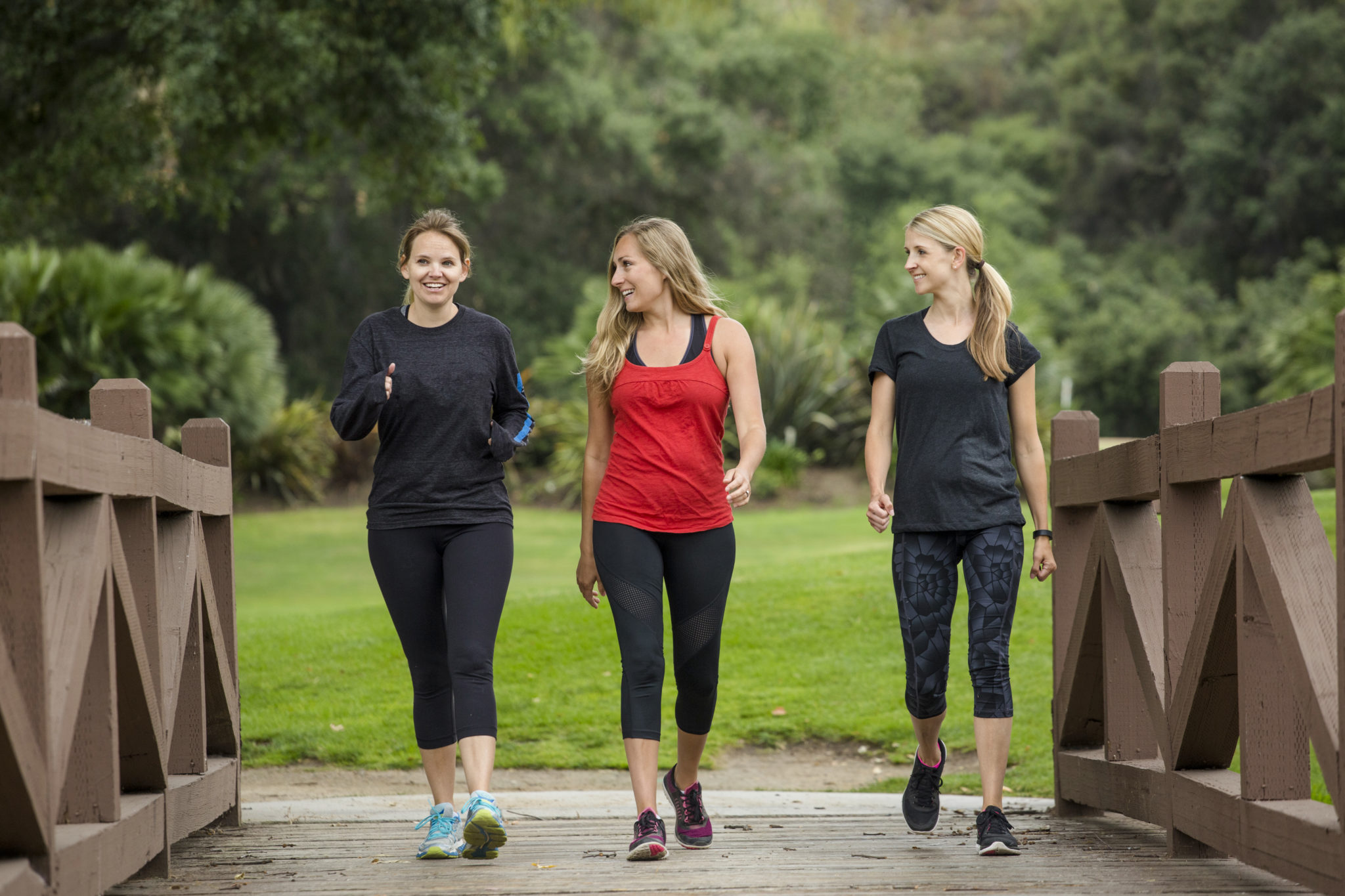
Walking is simple, low-impact, and (usually) free to do, making it an obvious choice for your active rest day.
Not to mention, walking offers tons of health benefits, including long-term weight loss and maintenance, decreased risk of heart disease, and a better mood.
If you’re up for a challenge, Dale suggests adding 50 percent to your average step count on active rest days. This means if you’re currently averaging 10,000 steps per day, shoot for 15,000.
“This extra low-intensity steady-state movement means I’m still keeping my body warm and active, without the added stress and muscle breakdown of something like weightlifting or HIIT,” she explains.
